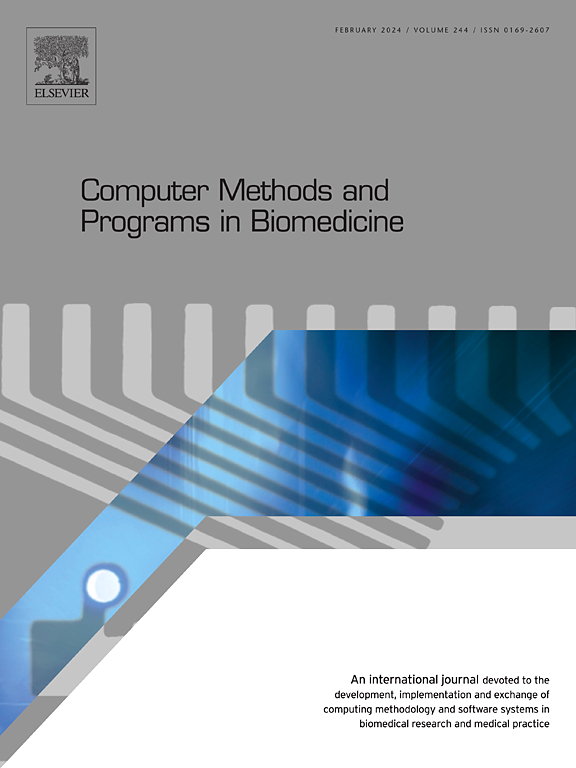Performance analysis of 2D and 3D image features for computer-assisted speech diagnosis of dental sibilants in Polish children
IF 4.9
2区 医学
Q1 COMPUTER SCIENCE, INTERDISCIPLINARY APPLICATIONS
引用次数: 0
Abstract
Background and Objective:
Sigmatism is a speech disorder concerning sibilants, and its diagnosis affects many Polish children of preschool age. The success of therapy often depends on early and accurate diagnosis. This paper presents research findings on using 2D and 3D (time-related) visual features to analyze the place of articulation, sibilance (the character of a gap between teeth that allows the articulation of sibilant sounds), and tongue positioning in four of twelve Polish sibilants:/s/,/z/,/ʦ/, and/dz/.
Methods:
A dedicated data acquisition system captured the stereovision stream during the speech therapy examination (201 speakers aged 4-8). The material contains 23 words and four logatomes. This study introduces 3D texture and shape features extracted for the mouth, lips, and tongue. The third dimension is the time of articulation, and the volumes reflect the movements of speech organs. The research compares the usability of 3D mode to a 2D approach (mouth texture features; mouth, lips, and tongue shape parameters) described in previous works. The statistical analysis includes Mann-Whitney U test to indicate the significant differences between selected articulation patterns for each sibilant and pronunciation aspect (considering p0.05).
Results:
Overall outcomes suggest the dominance of 3D time-related statistically significant features, especially describing the shape of a tongue. Analysis considering features with at least medium effect size showed that 3D features differentiate dental and interdental articulation in case of/s/,/z/, and/ʦ/, while in case of/dz/ significant parameters were 2D. The 3D mode prevails also in terms of sibilance: analysis of sounds/z/ and/ʦ/ results in 3D features only, but for/s/ and/dz/ outcomes include both 3D and 2D parameters. Analysis of the tongue positioning during articulation in terms of at least moderate effect size suggests a presence of features only in the case of affricates:/ʦ/ (3D features) and/dz/ (2D features). All parameters with at least medium effect size describe the shape of the tongue.
Conclusions:
This research proves the potential of visual data in building computer-aided speech diagnosis systems using non-contact recording tools. It highlights the usability of a 3D approach introduced in this paper. Results also emphasize the importance of tongue movement analysis.
求助全文
约1分钟内获得全文
求助全文
来源期刊

Computer methods and programs in biomedicine
工程技术-工程:生物医学
CiteScore
12.30
自引率
6.60%
发文量
601
审稿时长
135 days
期刊介绍:
To encourage the development of formal computing methods, and their application in biomedical research and medical practice, by illustration of fundamental principles in biomedical informatics research; to stimulate basic research into application software design; to report the state of research of biomedical information processing projects; to report new computer methodologies applied in biomedical areas; the eventual distribution of demonstrable software to avoid duplication of effort; to provide a forum for discussion and improvement of existing software; to optimize contact between national organizations and regional user groups by promoting an international exchange of information on formal methods, standards and software in biomedicine.
Computer Methods and Programs in Biomedicine covers computing methodology and software systems derived from computing science for implementation in all aspects of biomedical research and medical practice. It is designed to serve: biochemists; biologists; geneticists; immunologists; neuroscientists; pharmacologists; toxicologists; clinicians; epidemiologists; psychiatrists; psychologists; cardiologists; chemists; (radio)physicists; computer scientists; programmers and systems analysts; biomedical, clinical, electrical and other engineers; teachers of medical informatics and users of educational software.
 求助内容:
求助内容: 应助结果提醒方式:
应助结果提醒方式:


